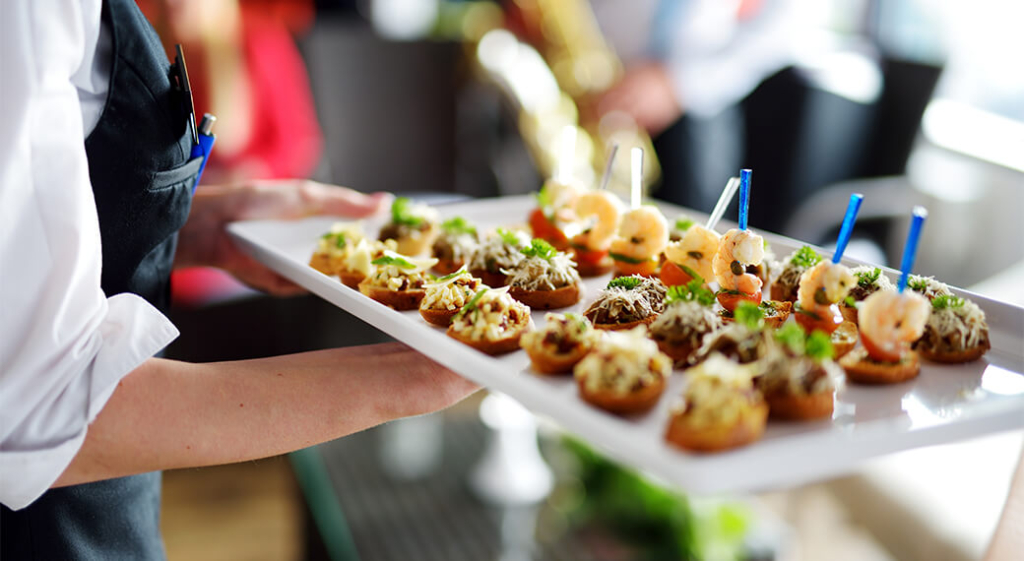Unlike traditional restaurants, caterers frequently operate in a dynamic environment, often lacking the convenience of a fixed, fully equipped kitchen at the point of service. In this article, we share tips on the best types of ingredients to serve when long transportation and holding times are at play.
The Bumpy Road From Kitchen to Client
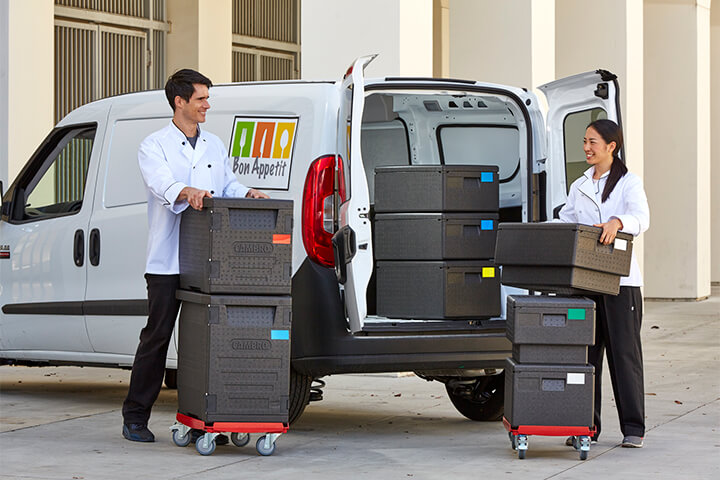
One of the most significant hurdles caterers face is the logistical challenge of transporting prepared food from their central kitchen to various event locations. This journey exposes the food to a multitude of physical stresses, including constant movement, bumps, and vibrations.
Designing a menu with transportation and holding in mind is the first step in mitigating these challenges.
Design Your Catering Menu for Resilience
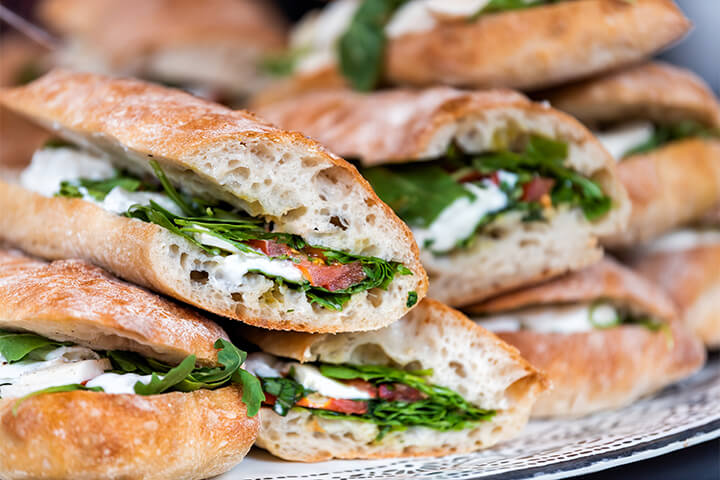
When building a menu for a dynamic catering event, every item must be conceived and executed with the entire lifecycle in mind — from prep kitchen to guest’s plate, including the transport and holding phases.
Strategic Ingredient Selection
Prioritize ingredients that have strong structural integrity, i.e., food that naturally holds its shape, texture, and color. Below are tips for different food groups that show the most resilient ingredients, as well as those to avoid.
Vegetables
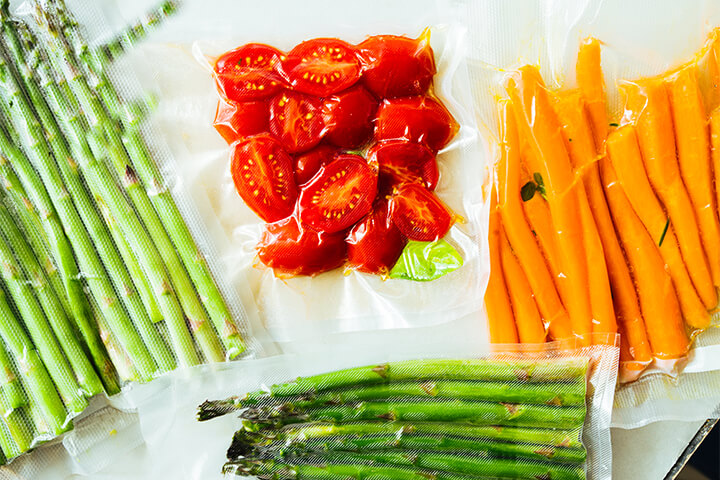
Choose: Root vegetables like carrots, potatoes, and parsnips that have been roasted or braised; squash; cruciferous vegetables like broccoli, cauliflower, or Brussels sprouts that have been blanched and shocked, then roasted; sturdy greens like kale and cabbage for slaws or lightly wilted dishes.
Avoid: Delicate leafy greens unless dressed à la minute or specifically chosen for wilting, like spinach placed under a hot protein.
Proteins
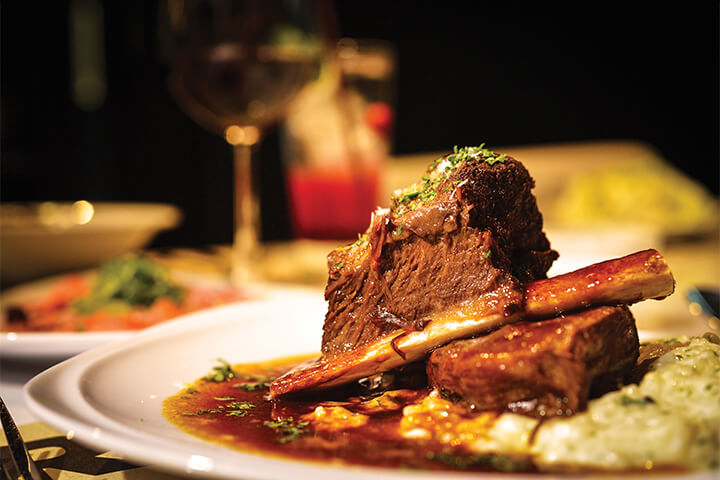
Choose: Cuts suited for lower, slower cooking methods (i.e., braising, confit, sous vide) like beef short ribs, pork shoulder, lamb shanks, and chicken thighs; Whole roasted poultry that is carved on-site; Cured or smoked items.
Avoid: Delicate fish unless specifically planned for cold/room temp service or very controlled reheating (sous-vide). Medium-rare steaks are exceptionally challenging — best seared and sliced on-site or simply avoided.
Grains & Legumes
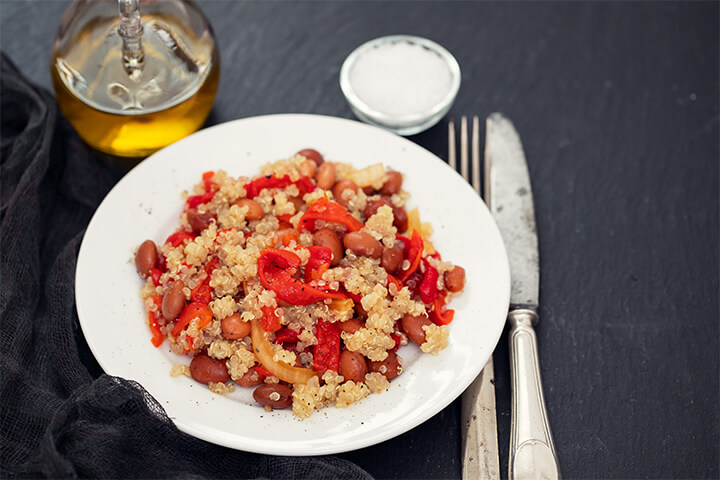
Choose: Hearty grains like farro, barley, and quinoa; lentils and beans hold well and can absorb dressing without becoming mushy if cooked al dente.
Avoid: Short- or medium-grain white rice can become overly sticky, gummy, or clump together. If allowed to cool and dry, rice can become hard.
Fruits

Choose: Sturdier fruits like apples and pears that have been poached or roasted; berries used as garnish added late; citrus segments.
Avoid: Easily bruised or oxidizing fruits like bananas or avocados unless they’re used immediately.
Fat
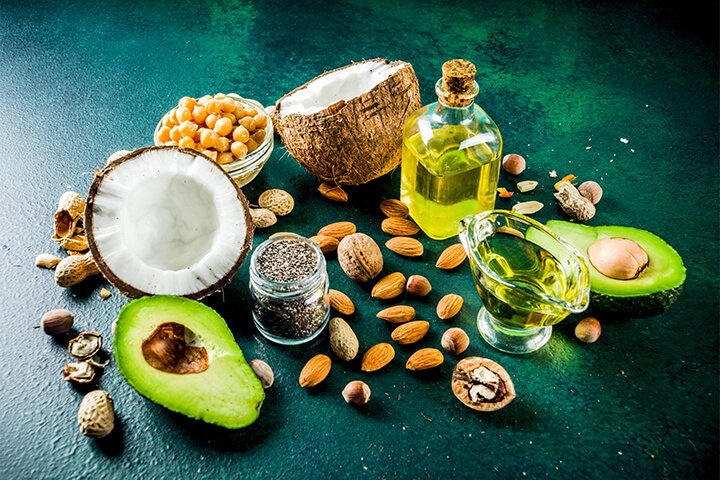
Many aromatic molecules responsible for a food’s taste and scent are fat-soluble. Fat acts as a reservoir for these compounds, preventing their premature escape. During transport and holding, food may be subjected to temperature changes and air circulation, both of which can lead to the loss of these delicate flavor molecules. The presence of fat helps to slow down this process, ensuring that the food retains its intended taste profile for a longer period.
Fats have varying levels of stability and different impacts on texture and flavor over time and under varying conditions.
Choose: Fats high in saturated fatty acids and tropical oils such as coconut and palm oil, tend to be more solid or semi-solid at room temperature and have higher melting points. Oils rich in monounsaturated fats, such as olive oil, peanut oil, and avocado oil, have a relatively good resistance to oxidation and can help maintain moisture and flavor in dishes. Extra virgin olive oil also contributes to better stability and flavor retention in appropriate dishes.
Avoid: Oils high in polyunsaturated fatty acids, such as soybean oil, corn oil, sunflower oil, and flaxseed oil, are more prone to oxidation due to the presence of multiple double bonds in their fatty acid chains.
Cooking Techniques for Transport & Holding
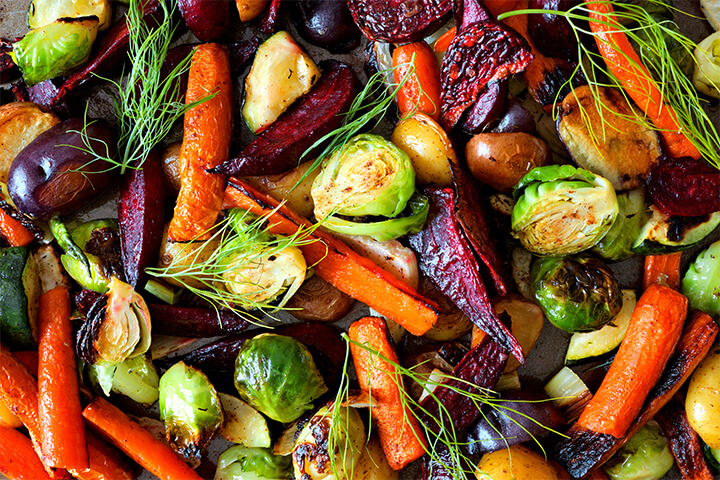
Certain cooking techniques give food a leg up during transport and holding.
Choose:
- Sous-Vide is unparalleled for precise temperature control.
- Braising/Stewing/Confit techniques yield tender, flavorful results that often improve with resting. They hold temperature well in insulated carriers and reheat gently. Sauces are inherent and help maintain moisture.
- Large roasts hold heat well. Root vegetables and sturdy items roast beautifully and retain integrity. Consider slight undercooking initially, anticipating carryover cooking during transport and holding.
- Component cooking, aka, preparing elements separately. Cook protein, starch, veg, and sauce individually. Transport in separate, appropriate containers. Combine/plate on-site. This maintains distinct textures and flavors and prevents sogginess or bleeding.
Avoid:
- Deep frying makes it extremely difficult for food to maintain crispness.
- Delicate pan searing to reheat items often leads to overcooking.
- Emulsion sauces like classic Hollandaise or Béarnaise are prone to breaking with temperature fluctuations and holding.
- Microwaving to reheat elements is detrimental to texture and quality.
Build Catering Success From the Menu Up
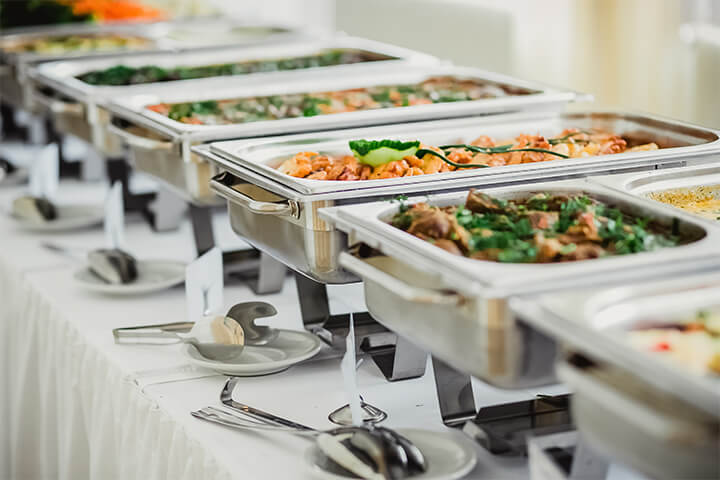
Designing a successful off-site catering menu hinges on selecting ingredients and employing cooking techniques that prioritize resilience during transport and holding. Ultimately, a well-planned menu is the cornerstone of overcoming the logistical challenges inherent in dynamic catering environments and delivering a positive culinary experience.

